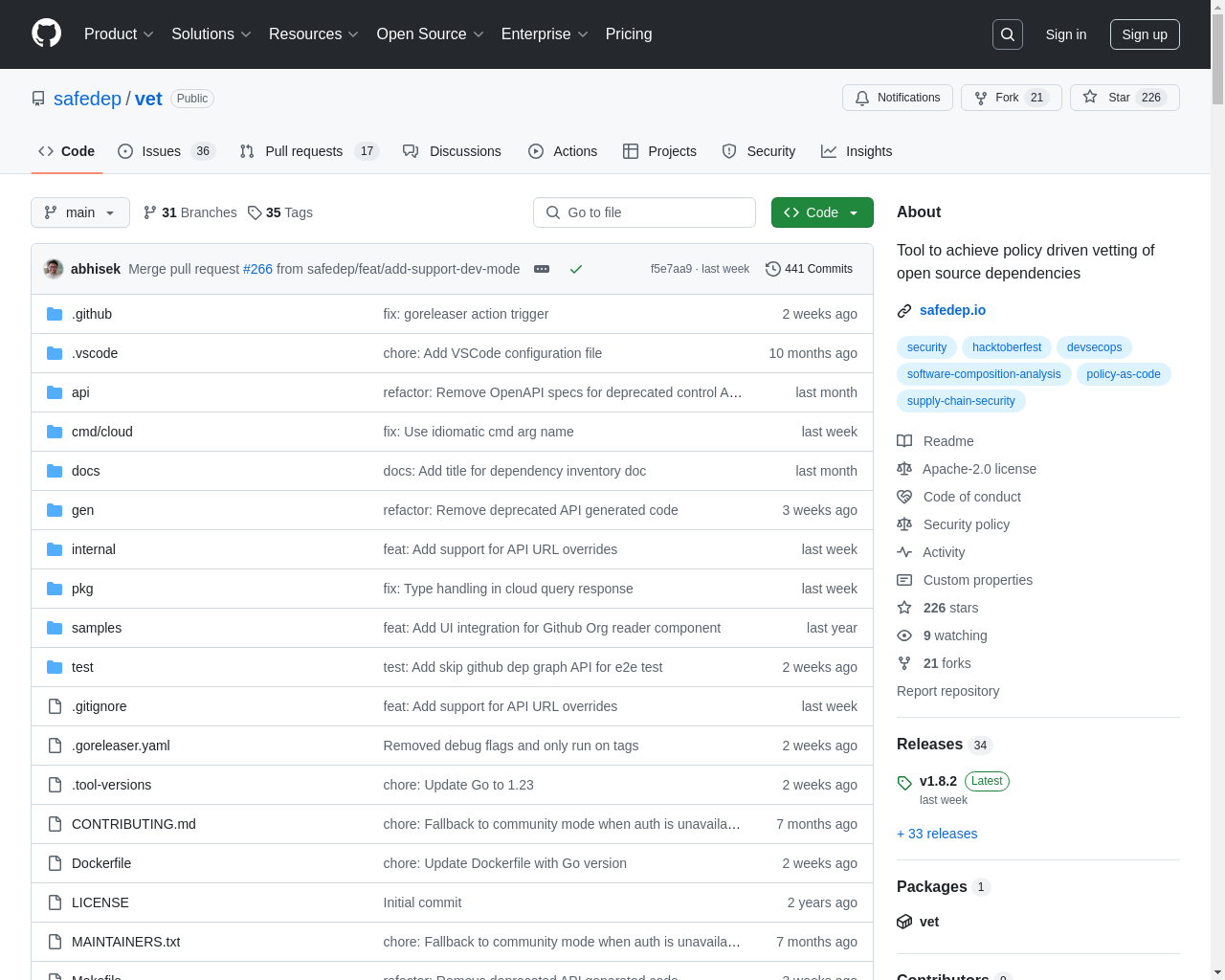

Highlight 1
Vet effectively identifies not just vulnerabilities but also risks related to license compliance and the popularity of OSS packages, providing a well-rounded risk analysis.
Highlight 2
The seamless integration of vet into existing CI/CD pipelines allows for automated vetting, saving development teams time and effort in manual checks.
Highlight 3
The tool presents its findings in an accessible manner, enabling developers at all levels to understand the risks associated with their dependencies.

Improvement 1
The documentation could be enhanced with more detailed examples and use cases to better guide users through the setup and execution processes.
Improvement 2
A more intuitive dashboard design could improve user experience, making it easier for users to navigate and interpret risk assessments.
Improvement 3
Expanding language options within the tool could make it more accessible to non-English speaking developers and teams.
Product Functionality
Enhance functionality by adding features such as customizable risk thresholds and real-time alerts for newly identified risks in dependencies.
UI & UX
Consider redesigning the dashboard to include visual representations of risk levels and trends over time for a better user experience.
SEO or Marketing
Implement targeted SEO strategies, such as keyword optimization for open-source risk assessment, to attract more relevant users to the platform.
MultiLanguage Support
Add support for multiple languages to broaden the user base, allowing developers from various linguistic backgrounds to utilize the tool efficiently.
- 1
What does Vet do?
Vet analyzes open-source software components for risks related to vulnerabilities, licensing, popularity, and security hygiene, ensuring that development teams can consume safe OSS.
- 2
How can I integrate Vet into my CI/CD pipeline?
Vet can be easily integrated into existing CI/CD workflows, allowing for automated vetting during the software build process.
- 3
What types of risks does Vet identify?
Vet identifies risks related to vulnerabilities, OSS license compliance, package popularity, and overall security hygiene to provide a comprehensive risk analysis.
